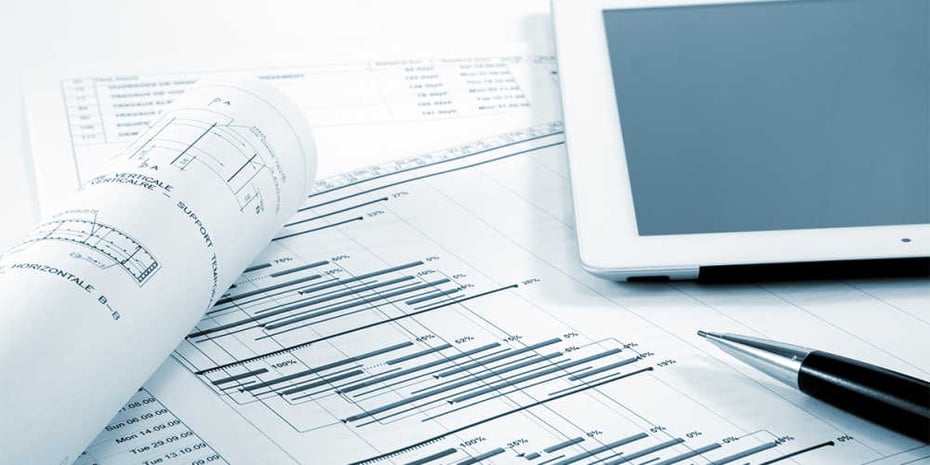Efficient Construction Document Management Solutions for each Task
Efficient Construction Document Management Solutions for each Task
Blog Article
Optimizing Project Cooperation: Engineer's Best Practices in Building And Construction Paper Management
In the detailed realm of building projects, the reliable management of building and construction documents stands as a keystone for success. Architects, with their careful attention to information and innovative design remedies, are charged with coordinating a symphony of stakeholders, sources, and timelines. Nevertheless, amidst this complexity exists a sixty-four-thousand-dollar question: how can designers simplify collaboration processes to boost task outcomes? By exploring crucial approaches such as leveraging cloud-based platforms, establishing durable interaction methods, and guaranteeing information security, architects can raise their record management practices to brand-new heights.
Leveraging Cloud-Based Systems
Leveraging cloud-based systems is a basic method for contemporary designers in enhancing building file management processes. By transitioning from traditional paper-based systems to shadow remedies, engineers can enhance partnership, enhance document accessibility, and boost total job effectiveness. Cloud-based platforms offer architects the capacity to store, share, and update building and construction records in real-time, making sure that all staff member have accessibility to the most current details no matter of their location. This accessibility advertises smooth communication and control among task stakeholders, causing fewer mistakes and hold-ups in the building process.
Moreover, cloud-based platforms offer a safe and secure setting for storing sensitive task information, using encryption, routine back-ups, and user authorization setups to protect information honesty. Architects can likewise profit from the scalability of cloud solutions, enabling them to readjust storage space capacity and performance based upon task requirements. Generally, leveraging cloud-based systems encourages architects to enhance their building and construction record management processes, driving higher cooperation, efficiency, and success in their tasks.
Executing Version Control Solution
Having actually developed the advantages of cloud-based platforms in building and construction document administration, designers can currently boost their record control processes by executing Version Control Solution. Version Control Solution (VCS) are crucial devices that track adjustments in documents, ensuring that employee are always dealing with the newest and most accurate information. By executing VCS, architects can maintain a centralized repository where all project documents are stored, enabling smooth cooperation while decreasing the threat of mistakes and variation disputes.
One secret advantage of Version Control Systems is the capacity to track the full background of file changes, enabling users to go back to previous versions if needed (construction document management). This feature is particularly valuable in building and construction tasks where style versions and modifications are usual. VCS promotes better communication amongst team members by offering a clear audit path of that made particular modifications and when they were made. This transparency not only boosts liability but additionally assists in dealing with disagreements or inconsistencies that might occur throughout the job lifecycle.
Establishing Communication Methods
To guarantee effective and efficient task control, engineers have to develop clear and durable interaction procedures within their building and construction paper monitoring procedures. This system might be a job monitoring software, e-mail strings, or cloud-based storage space options.
Additionally, communication procedures ought to also consist of standards on exactly how to deal with conflicts, change orders, and immediate concerns that may arise throughout the job lifecycle. Establishing a structured method to interaction makes certain that all stakeholders get on the same page, promotes transparency, and eventually contributes to the effective conclusion of the construction task.
Making Use Of BIM Software Application for Sychronisation
BIM software plays a crucial function in enhancing control among task employee in the building sector. Building Details Modeling (BIM) assists in collaboration by giving a centralized system where architects, engineers, specialists, and other stakeholders can interact in a collaborated manner. With BIM software, job individuals can access and update a shared version that includes thorough information concerning the building style, building and construction components, and job timetables.

Furthermore, BIM software program allows real-time collaboration and interaction among employee, regardless of their physical area. Through cloud-based BIM systems, project stakeholders can access the most recent job information, track adjustments, and make informed choices quickly. Overall, leveraging BIM software application for coordination improves project performance, productivity, and inevitably leads to effective project results.
Ensuring Information Safety and Conformity
In the realm of building and construction file monitoring, safeguarding information honesty and guaranteeing governing compliance are vital considerations for designers and various other project stakeholders. Designers have to implement robust protection measures to secure delicate project info from unapproved access or breaches. Using safe and secure cloud storage services with file encryption protocols and access controls can assist alleviate threats related to data theft or loss. Frequently upgrading software program and systems, conducting security audits, and offering personnel training on information protection ideal practices are crucial action in preserving a protected environment for building file monitoring.

Final Thought
To conclude, designers can websites optimize job cooperation in building record management by leveraging cloud-based systems, implementing version control systems, developing communication procedures, making use of BIM software for sychronisation, and ensuring data safety and conformity. These best methods aid streamline the building procedure, boost communication among job stakeholders, and boost performance in project shipment. By adhering to these standards, architects can efficiently handle building and construction records and facilitate successful job results.
Via BIM software program, project participants can access and update a shared model that includes in-depth details concerning the structure design, construction components, and project schedules.
With cloud-based BIM platforms, job stakeholders can access the newest job info, track modifications, and make notified decisions quickly - construction document management. In general, leveraging BIM software application for coordination enhances project efficiency, performance, and inevitably leads to effective job results
In final thought, architects can optimize task cooperation in building and construction paper administration by leveraging cloud-based platforms, implementing variation control systems, developing interaction procedures, utilizing BIM software over here program for control, and making sure data security and conformity. These best practices aid enhance the construction procedure, boost communication amongst job stakeholders, and enhance performance in job delivery.
Report this page